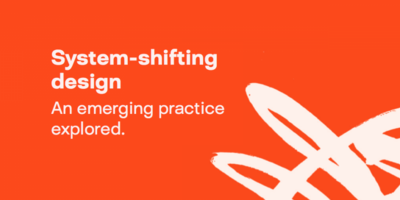Moving beyond financial value: How might we capture the social and environmental value of design?

In 2015 and 2018, Design Council pioneered research that produced ground-breaking evidence. We were able to measure and show the economic value of design. Our Design Economy report showed that design contributed £85.2bn Gross Value Added in 2016, 68% of which is produced by designers working outside of design agencies, such as automotive and aerospace). That equates to around 75% of the value of the banking and financial services industry. We followed this up with research into design skills, which we believe are not just held by designers. Our findings showed this totalled £209bn Gross Value Added, with people using design skills £10 an hour more productive than the UK average.
So the economic case for design is clear. We know that design also achieves social and environmental value. Bad design can increase inequalities and contribute to the climate crisis. But good design can improve people’s health and wellbeing, and lead to a more sustainable, regenerative world. And design has other often invisible ‘ripple effects’, like creating new relationships, sparking new ways of framing challenges, and building confidence in participants, which all leads to further value. We, together with many individual designers and design firms, have been measuring these effects individually, and our task is now to develop a method to measure them collectively.
The next version of the Design Economy report will measure the environmental, social and wider value of design. Based on our stakeholder engagement and user research, it will do so in a format that helps designers and commissioners take it and use it in their contexts. It will help them make the case for design and contribute their own impact to this collective understanding of value.
As a first step, we were lucky enough to work with three students from the Institute for Innovation and Public Purpose over the summer 2020 to start exploring what a methodology for measuring the social and environmental value should be. Guided by Sian Whyte, Qiuyu Chen, Patricia Ugboma and Jakob Kofler carried out research into the concept and practice of value measurement and the value of design. They conducted twoexperiments to see whether ‘bottom up’ methods of value measurement could be applied to design, and synthesised the insights into a series of recommendations for us to take forward and create a methodology for the Design Economy 2021 report.
Subscribe to our newsletter
Want to keep up with the latest from the Design Council?

